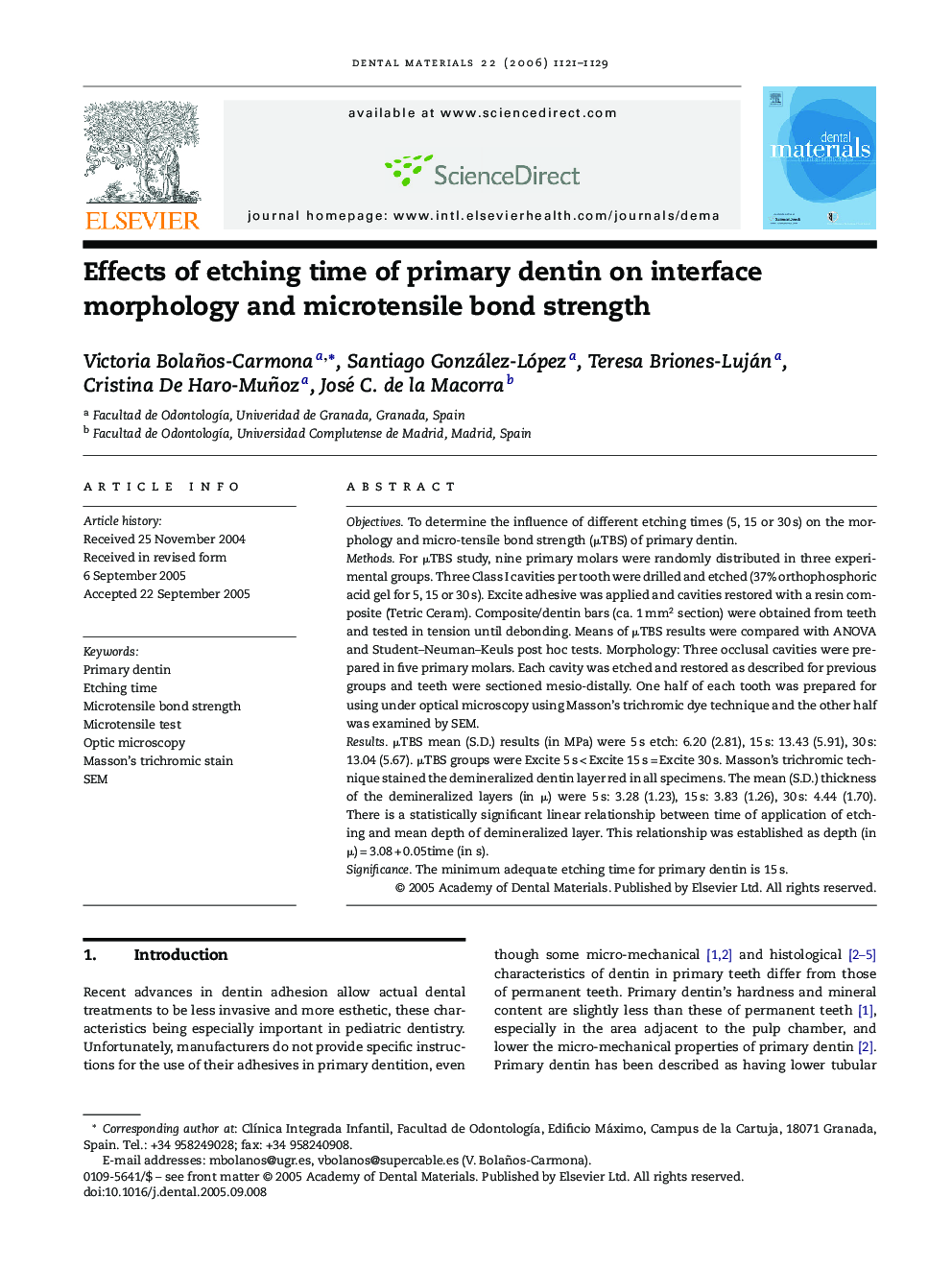| Article ID | Journal | Published Year | Pages | File Type |
|---|---|---|---|---|
| 1423437 | Dental Materials | 2006 | 9 Pages |
ObjectivesTo determine the influence of different etching times (5, 15 or 30 s) on the morphology and micro-tensile bond strength (μTBS) of primary dentin.MethodsFor μTBS study, nine primary molars were randomly distributed in three experimental groups. Three Class I cavities per tooth were drilled and etched (37% orthophosphoric acid gel for 5, 15 or 30 s). Excite adhesive was applied and cavities restored with a resin composite (Tetric Ceram). Composite/dentin bars (ca. 1 mm2 section) were obtained from teeth and tested in tension until debonding. Means of μTBS results were compared with ANOVA and Student–Neuman–Keuls post hoc tests. Morphology: Three occlusal cavities were prepared in five primary molars. Each cavity was etched and restored as described for previous groups and teeth were sectioned mesio-distally. One half of each tooth was prepared for using under optical microscopy using Masson's trichromic dye technique and the other half was examined by SEM.ResultsμTBS mean (S.D.) results (in MPa) were 5 s etch: 6.20 (2.81), 15 s: 13.43 (5.91), 30 s: 13.04 (5.67). μTBS groups were Excite 5 s < Excite 15 s = Excite 30 s. Masson's trichromic technique stained the demineralized dentin layer red in all specimens. The mean (S.D.) thickness of the demineralized layers (in μ) were 5 s: 3.28 (1.23), 15 s: 3.83 (1.26), 30 s: 4.44 (1.70). There is a statistically significant linear relationship between time of application of etching and mean depth of demineralized layer. This relationship was established as depth (in μ) = 3.08 + 0.05time (in s).SignificanceThe minimum adequate etching time for primary dentin is 15 s.
